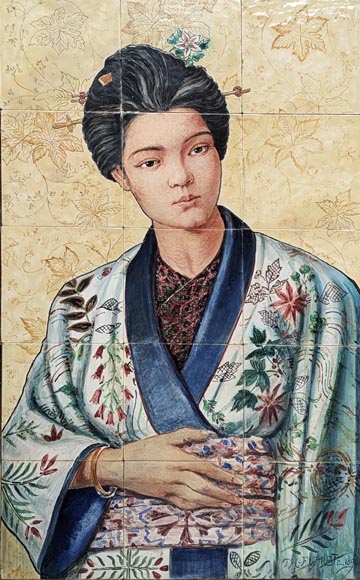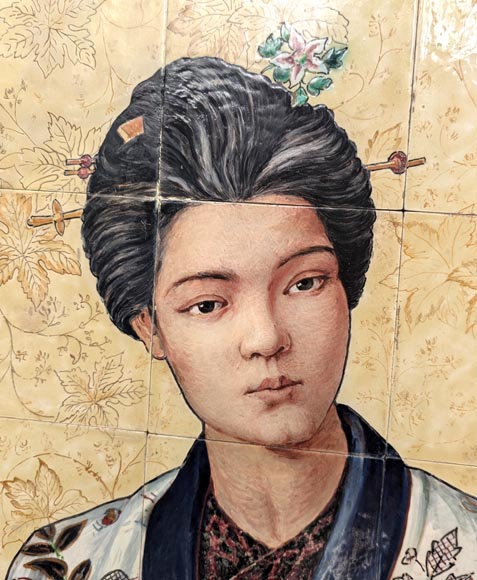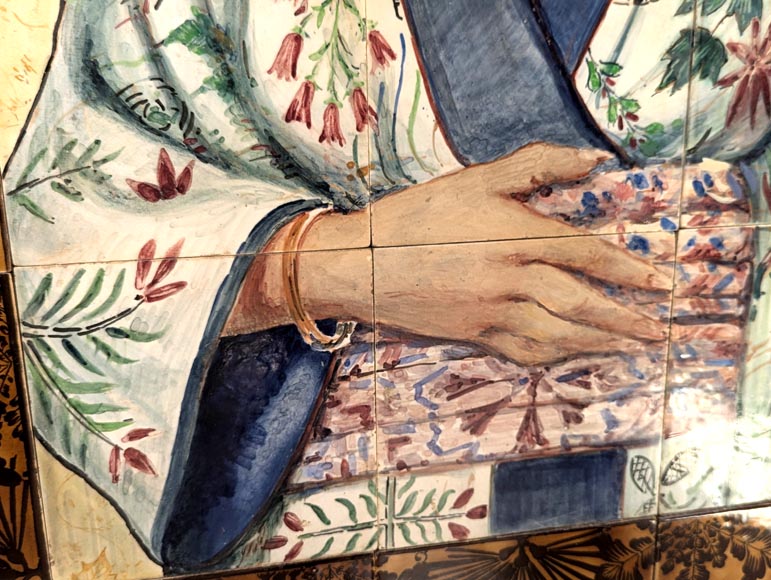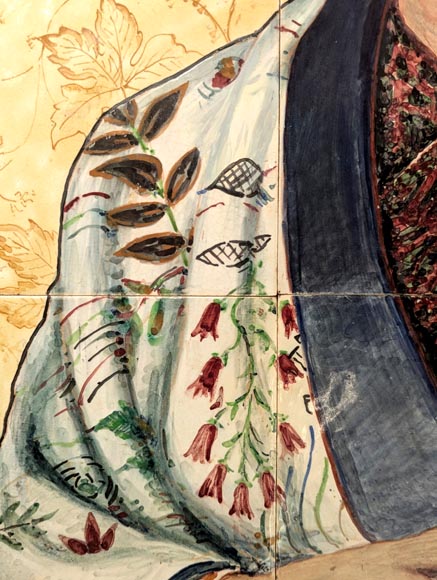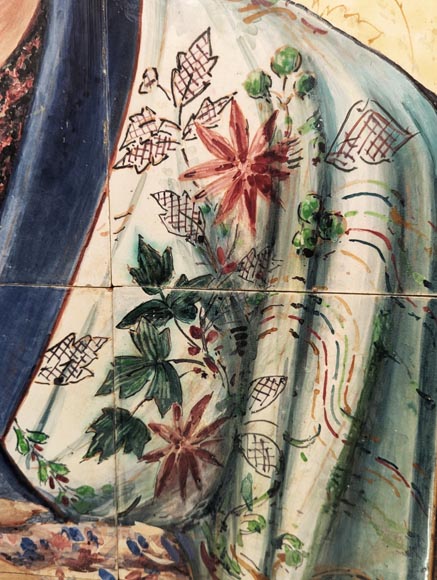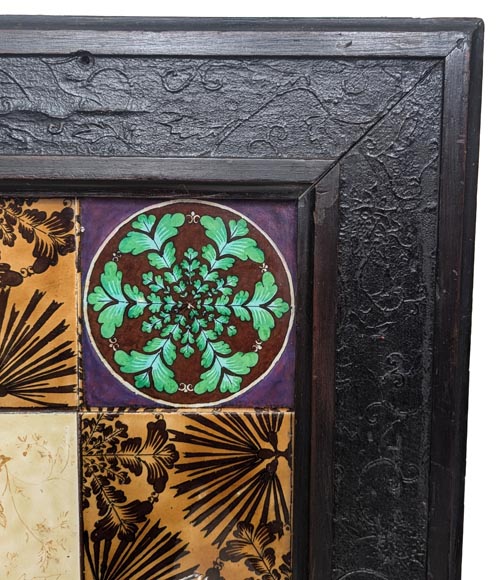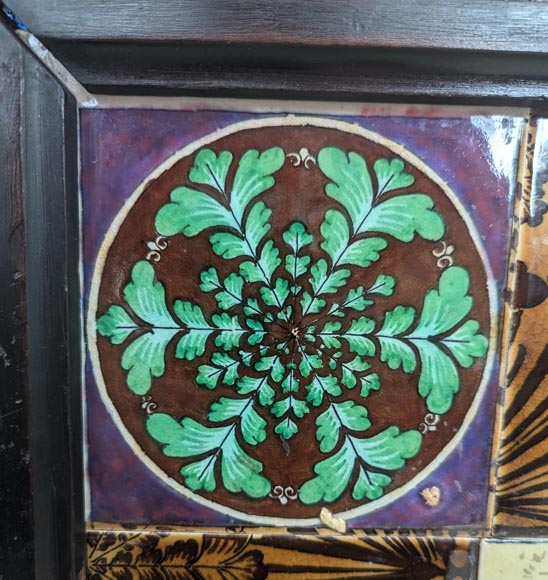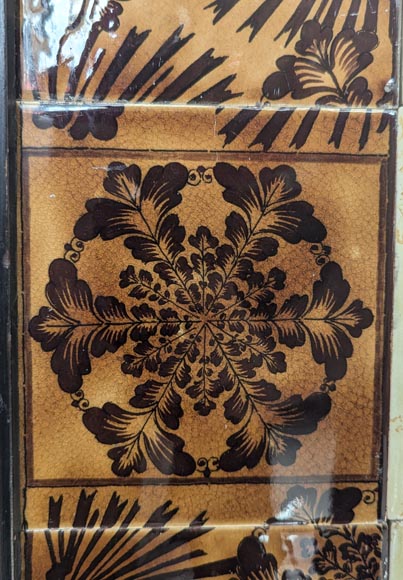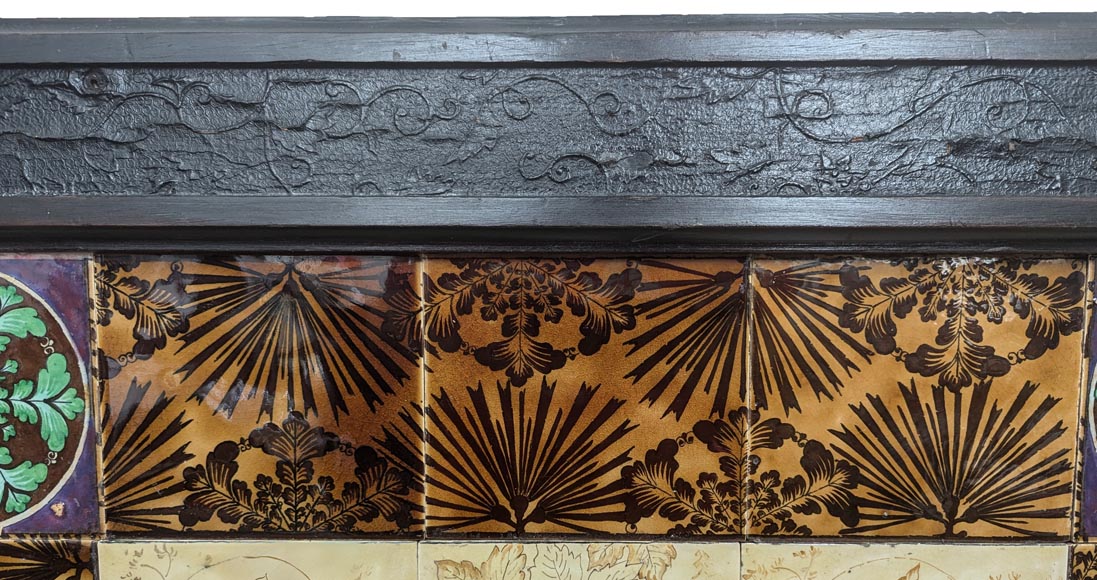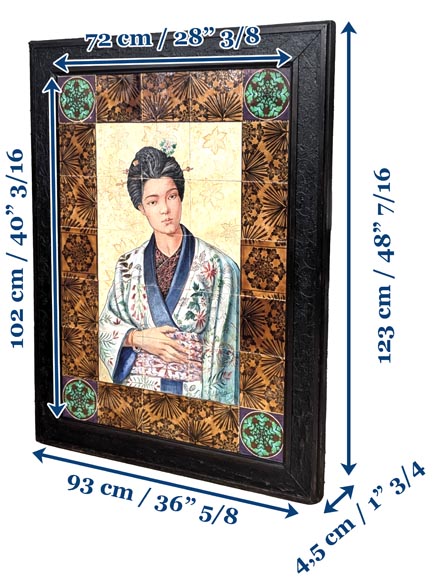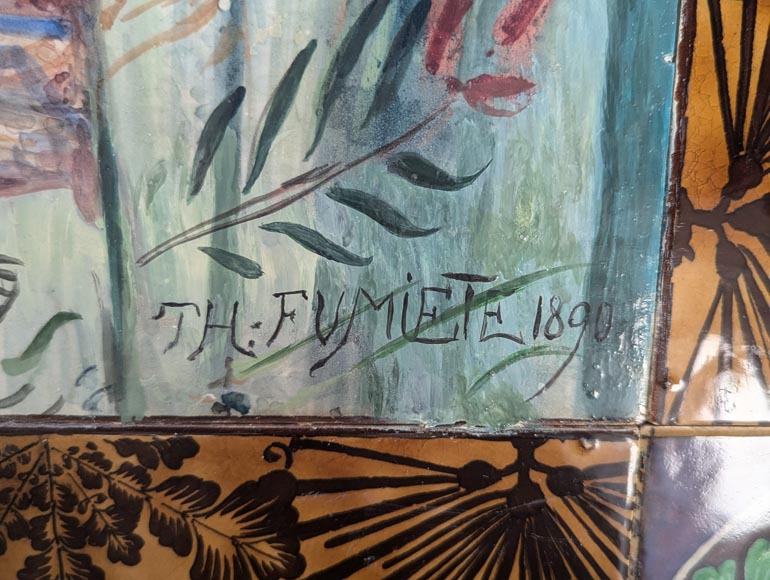Style Japonism, Chinoiserie / Ref.14790
BOCH Brothers (ceramic), Th. FUMIETE (?), Portrait of a Japanese Lady in Earthenware, 1890
Dimensions
Width 36'' ⅝ 93cm
Height 48'' ⅜ 123cm
Depth: 2'' 5cm
Origin:
France, 19th century
This portrait of a Japanese lady dated 1890 bears the signature, possibly apocryphal, of a certain Th. Fumiete, whom our research has not been able to trace. He worked for Boch frères, whose mark is visible on the reverse of the tiles.
The Boch family began producing ceramics in 1748. However, the “Boch Frères” company was only founded in 1844, after many moves, by Eugène and Victor Boch and their brother-in-law Jean-Baptiste Nothomb. Between then and 1881, Victor Boch was at the helm, with engineer Charles Tock taking over until 1904.
The assembled ceramic tiles form a large decorative panel. The woman, with her long black hair held back by several sticks behind her head, looks ahead, her head slightly tilted to the side. She is dressed in a kimono with a rich and colorful floral design over a tunic that closes tightly at the neck. She places her right hand on the wide belt (“obi”) that wraps around her. The decorative background is sprinkled with Japanese maple leaves. A primary decorative border adorned with stylized plant motifs (some resembling papyrus leaves) highlights the central figure. The entire piece is set in a wooden frame carved in bas-relief with similarly stylized plant motifs forming scrolls.
The enthusiasm that arose in the second half of the 19th century, notably following Japan’s reopening to international trade and its participation in the 1867 Universal Exposition, became known as “Japonism”. This sparked a revolution in Western art, strongly inspiring many artists across all fields. This piece demonstrates the strong influence of Japanese art on Western creations at the end of the 19th century, both in subject and execution (the deliberate absence of depth and the use of flat colors are characteristic of Japanese prints).
This work, beyond its intrinsic aesthetic qualities, is emblematic of this movement and reflects the enthusiasm aroused by Japanese works, objects, and even lifestyle among Westerners at the end of the 19th century.
The ceramic is original. The design on three tiles has undergone a previous high-quality restoration. The signature has also been restored, suggesting it may be inaccurate.
Informations
Price: on request
Recommended for you :
Dimensions:
Height: 8
Diameter: 35
Dimensions:
Height: 8
Diameter: 61
Dimensions:
Height: 4
Diameter: 30
Dimensions:
Height: 4
Diameter: 30
Dimensions:
Height: 9
Diameter: 32
Dimensions:
Width: 69
Height: 69
Depth: 4
Dimensions:
Width: 30
Height: 17
Depth: 18
Dimensions:
Height: 2
Diameter: 23
Dimensions:
Height: 5
Diameter: 80
Dimensions:
Width: 16
Height: 35
Depth: 12
Dimensions:
Width: 18
Height: 16
Depth: 18
Dimensions:
Height: 5
Diameter: 33




